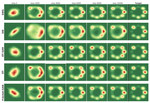Saurav Manchanda
Ph.D. Candidate, Computer Science
University of Minnesota
manch043 [at] umn [dot] edu
About me
Hello! I am a Ph.D. Candidate at University of Minnesota, Twin Cities advised by Prof. George Karypis. My research interests broadly include Graph Neural Networks, Information Retrieval and Computational Linguistics. My Ph.D. research is focused on developing distant-supervised algorithms with applications to text-segmentation, product-search, and citation-analysis. Recently, I have also developed interest (and published too) in Generative Adversarial Networks.
Interests
- Graph Neural Networks
- Information Retrieval
- Computation Linguistics
- Generative Adversarial Networks
Education
-
Ph.D. in Computer Science, 2015-now
University of Minnesota
-
B.Tech. in Computer Science and Engineering, 2011-2015
Indian Institute of Technology (IIT), Kharagpur




